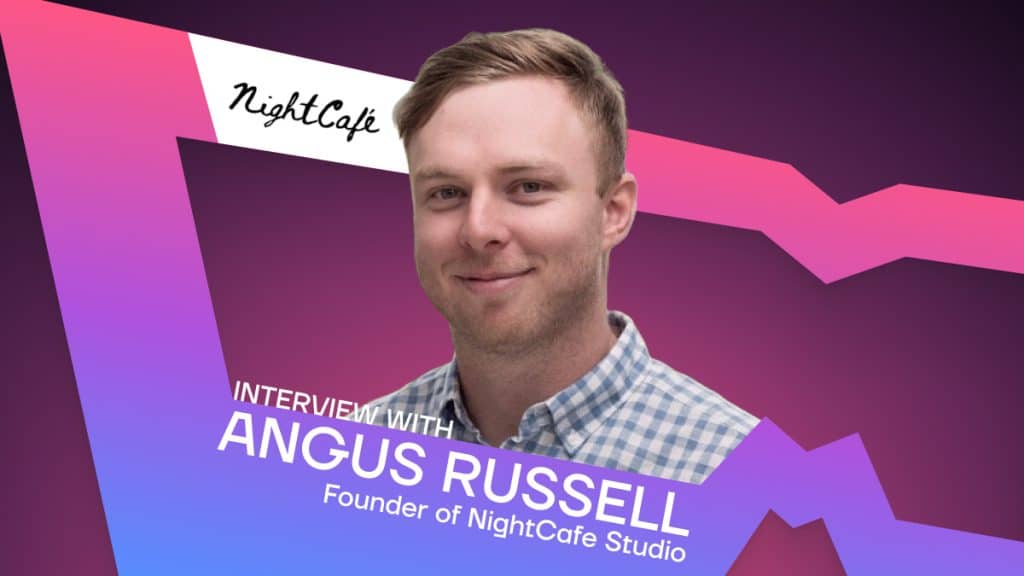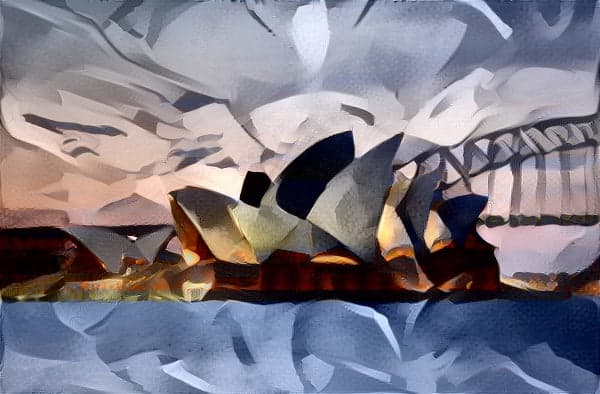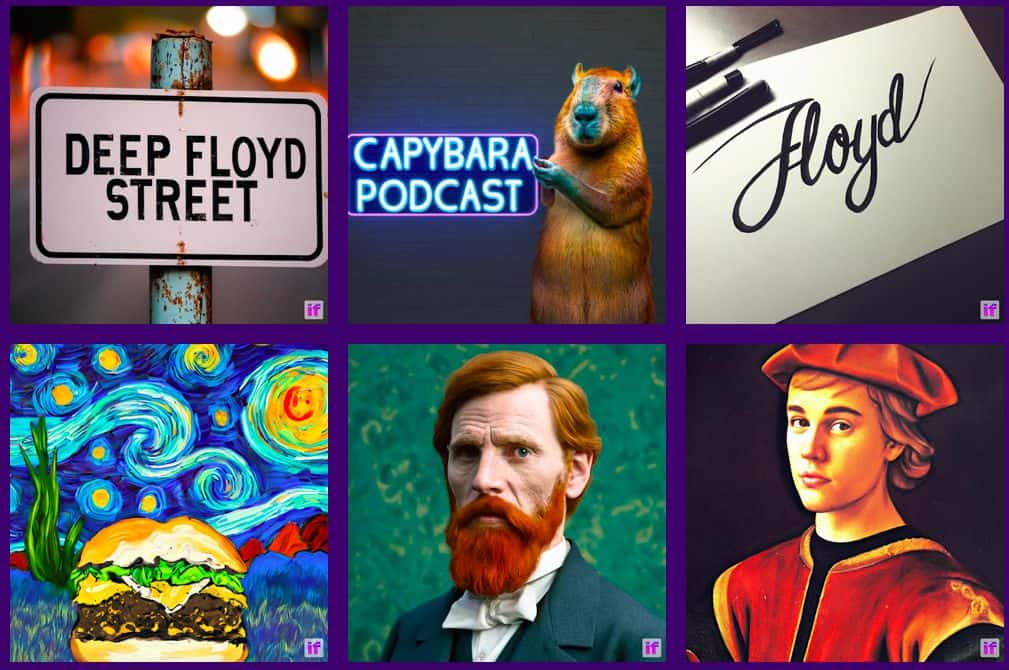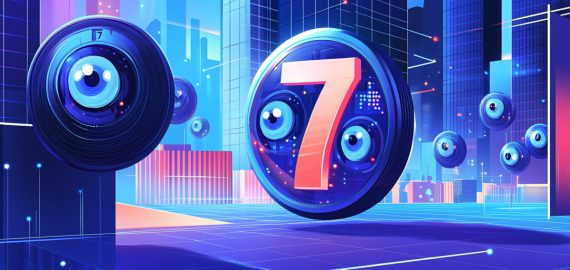DeepFloyd and Beyond: Exploring the Latest in AI Art with NightCafe Studio CEO


In Brief
During an exclusive interview, the CEO of NightCafe Studio provided valuable insights and perspectives on AI-generated art.
Angus Russell introduced DeepFloyd – a new algorithm developed by NightCafe Studio’s partner, Stability AI, that operates in pixel space and uses a Large Language Model (LLM) to generate images.

NightCafe Studio is an AI Art Generator that allows users to create stunning and futuristic art in seconds with the help of artificial intelligence. Founded by Angus Russell four years ago, NightCafe Studio was born out of Angus’s own frustration of not being able to find art pieces that resonated with him. Driven by the knowledge that style transfer algorithms existed, he searched for a website that would enable him to create personalized art through style transfer and print it.
To his disappointment, he couldn’t find such a platform. However, this setback sparked an innovative idea in him. He decided to create a neural style transfer app for creating AI-generated art, and he put it up on Reddit.
NightCafe Studio originated as a text-to-image generation platform, making it the first of its kind. This unique feature brought about a significant surge in both revenue and user base. Since then, the platform has remained at the forefront of generative AI, attracting a large community of enthusiasts who delight in using the generator to create stunning artwork. Today, NightCafe Studio is widely regarded as one of the most popular and innovative AI image generators available.
During an interview with Angus Russell, we explored the benefits and limitations of AI-generated art, the increasing use of artificial intelligence in the art world, and the latest AI image generation algorithm, DeepFloyd.

The Emergence of AI-generated Art
In the last decade, the art industry has witnessed a gradual infiltration of AI and machine learning (ML). These cutting-edge technologies have introduced some fascinating new concepts, such as Deepfakes and DALL-E, which have gained significant attention across the globe. Today, the art industry cannot afford to ignore the immense impact of AI, which is now triggering a long-overdue revolution in the sector.
Angus discussed how NightCafe Studio experienced spikes in growth during the release of Stable Diffusion, a text-to-image model that his company went live with on the launch day. Since then, the barrier to entry for creating similar tools has been lowered due to the open-sourcing of algorithms and sample codes.
NightCafe Studio’s founder believes that creating AI art is not just about the end product but also about the process of creating it. He sees it as a form of therapy and relaxation, allowing people to express themselves in unique and creative ways. Many people who had never considered themselves creative have discovered their artistic abilities through AI-generated images. This philosophy is reflected in the platform’s user interface, which is designed to be user-friendly and accessible to artists of all skill levels.
On NightCafe Studio alone, there are already between two and three million users per month, generating around a million images per day. Stability AI, an open-source generative AI company, stated that they had over 10 million users who were active daily shortly after the launch of Stable Diffusion.
DeepFloyd IF: The New Game-Changing AI Image Generation Algorithm
NightCafe Studio is implementing a new algorithm by Stability AI called DeepFloyd, which promises to revolutionize how we generate images with artificial intelligence.
DeepFloyd, which is currently in beta, is a new text-to-image model that can generate impressive images from natural language descriptions. It’s based on a novel architecture that combines a large language model with three diffusion models. It’s inspired by Imagen, a similar model developed by Google Research but never released to the public.
The model can generate clear and coherent images with text and objects in various spatial relationships, which is a challenging task for most other text-to-image models. This is achieved using the large language model T5-XXL-1.1 as a text encoder and a significant amount of text-image cross-attention layers that provide better prompt and image alliance.
DeepFloyd can also create images with a non-standard aspect ratio and has a high degree of photorealism. In addition, it allows for zero-shot image-to-image translations, which means that the style, patterns, and details of an output image can be modified while maintaining the basic form of the source image without the need for fine-tuning.
The new algorithm operates in a different way than Stable Diffusion. DeepFloyd uses pixel space and a Large Language Model (LLM), whereas Stable Diffusion uses latent space and a fixed CLIP model. DeepFloyd also uses multiple diffusion processes to create images, while Stable Diffusion only uses a single one.
DeepFloyd is the name of the research group that built the algorithm, and the algorithm itself is called IF. The research group includes many of the same people who created GPT-3’s predecessor, GPT-2, and a previous state-of-the-art language model called RuGPT.
Some speculation suggests that the name IF may be inspired by a Pink Floyd song of the same name, as hinted at by the algorithm research group’s social media bios.
Read more about the algorithm here.

Comparing AI Art Limitations and Digital Art
One of the major AI limitations is text, although DeepFloyd tackles this issue. Another limitation is the difficulty of getting an image exactly as envisioned, especially without expert prompting. AI also lacks the ability to understand and interpret the cultural and social contexts that shape human art. Therefore, AI-generated art can sometimes produce works that seem out of place or culturally insensitive.
However, AI-generated images can still be beautiful and at times even better than the original idea, as long as the user is open to being surprised, Angus said. Besides, there are ways to modify the generated images using AI algorithms or Photoshop. While getting an exact image is currently an area of active research, significant progress is being made. It may soon be possible to have full control over every aspect of an image.
AI relies on the images and art that exist on the web as inspiration, but only those that it was trained on. Different algorithms, such as Midjourney, DALL-E, and Stable Diffusion, are trained on different data sets, which means they may perform better on specific types of images.
Recently, researchers have been investigating the impact of removing low-quality images from training data sets to improve AI results. By filtering out these low-quality images, the resulting data set may become smaller but higher quality, leading to better results without increasing the size of AI models or requiring more expensive hardware. Angus shared that this approach represents a promising way to improve the quality of AI-generated images without relying on larger and more resource-intensive models.
One issue with AI in art is that it may devalue the work of human artists, who spend a lot of time creating art, while AI is able to generate art in a matter of seconds. However, there is a certain intangible quality to human art that may be difficult for AI to replicate, such as the emotional depth and complexity often present in human-created works. NightCafe Studio believes AI is less about creating art for commercial purposes and more about the enjoyment of the creative process itself.
“There will always be value in human-made art because it represents the effort and skill of the artist, whereas AI-generated art does not have the same intrinsic value,”
Angus said.
An ethical issue surrounding AI in art is the public image usage to train AI algorithms that may not belong to the company training the AI. While there are currently no laws broken, it raises questions about consent and privacy. Open-source companies like OpenAI and DALL-E are working on making the process more ethical, but it remains an open question. There may be future regulations regarding the use of images to train AI in art.
Despite these concerns, Angus believes the process of AI in art is not fundamentally different from human artists drawing inspiration from other artists’ work. AI knows what things look like and remembers bits about images, just like humans do. It’s simply better at recreating them from scratch.
Read more:
Disclaimer
In line with the Trust Project guidelines, please note that the information provided on this page is not intended to be and should not be interpreted as legal, tax, investment, financial, or any other form of advice. It is important to only invest what you can afford to lose and to seek independent financial advice if you have any doubts. For further information, we suggest referring to the terms and conditions as well as the help and support pages provided by the issuer or advertiser. MetaversePost is committed to accurate, unbiased reporting, but market conditions are subject to change without notice.
About The Author
Agne is a journalist who covers the latest trends and developments in the metaverse, AI, and Web3 industries for the Metaverse Post. Her passion for storytelling has led her to conduct numerous interviews with experts in these fields, always seeking to uncover exciting and engaging stories. Agne holds a Bachelor’s degree in literature and has an extensive background in writing about a wide range of topics including travel, art, and culture. She has also volunteered as an editor for the animal rights organization, where she helped raise awareness about animal welfare issues. Contact her on [email protected].
More articles

Agne is a journalist who covers the latest trends and developments in the metaverse, AI, and Web3 industries for the Metaverse Post. Her passion for storytelling has led her to conduct numerous interviews with experts in these fields, always seeking to uncover exciting and engaging stories. Agne holds a Bachelor’s degree in literature and has an extensive background in writing about a wide range of topics including travel, art, and culture. She has also volunteered as an editor for the animal rights organization, where she helped raise awareness about animal welfare issues. Contact her on [email protected].

















































